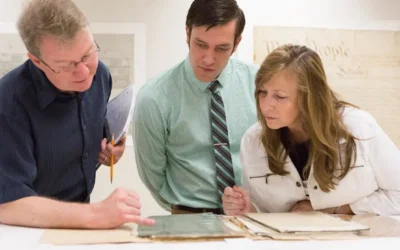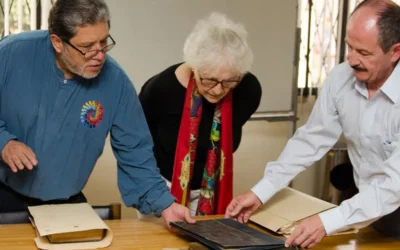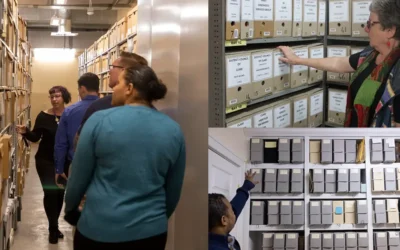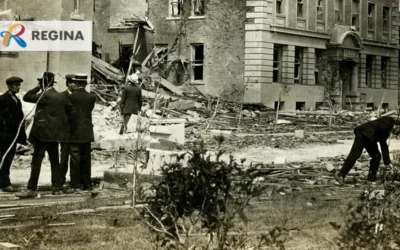The Archival CMS: Building A Business Case
Margot Note
A good CMS contains industry-standard metadata profiles customizable through intuitive user interfaces. Authority lists, hierarchical vocabularies, and attribute relationships can be imported or user-generated, maximizing accuracy and flexibility. Software features such as geo-location cataloging, pan-and-zoom image navigation, tagging and comment capabilities, and multilingual user interfaces enhance searching.
With all these benefits, you would think collections management systems would sell themselves. Unfortunately, no. Although a CMS could enhance archival work, archivists need to develop a compelling case for the value a CMS will bring to the institution and its communities.
Making Your Argument
A business case to invest in a CMS may be required. It can range from a formal document, a one-page document with bullet points, a presentation, or a verbal exchange. No matter the format, it defines the benefits of an initiative. It can forecast costs, benefits, and risks, so decision-makers can decide whether a project is viable and why one approach may be selected over other strategies. Business cases summarize an endeavor’s benefits, clarifying a project’s value to help stakeholders make decisions.
A business case, when presented successfully, offers many advantages. Stakeholders will have similar expectations concerning the value and benefits of the CMS to the organization. You can later convert a business case into a project plan with objectives, goals, milestones. It gauges whether an endeavor continues to offer value during the transition to a CMS and after its installation.
A good business case focuses less on technology, subject knowledge, or deliverables, and more on the goals of a project. How can the project deliver value? It can offer many types of value, including contributing to strategic aims, increasing efficiency, and lowering costs. Framing your request in a way that makes sense to people in leadership positions is vital. Help them by giving context to your vision with quantifiable numbers that relate to their goals.
Calculate Cost Savings
Consider the following ways to build your case. What are the possible cost-savings? How can the staff reduce wasted hours for work that could be managed automatically? Multiplied over time, how can the cost of these hours see a return of investment for implementing a collections management system? How can those hours be reinvested into more critical activities, such as improving services, increasing access, grant writing? The new CMS would make it possible to take on a project that would be impossible before; demonstrate what you will now be able to achieve, rather than just the time you will save. Show how the investment in a system will benefit all aspects of the archival program.
Repositories undertake projects to address a strategic need. In this situation, an opportunity provides context as to why the project should move forward and may justify expenditures that otherwise may be impossible. If a CMS project aims to satisfy strategic goals, this may be a primary decision-making factor when the technology is selected. High-level, institutional buy-in is required to support a CMS project. A CMS is a significant investment that requires initial and ongoing support from senior management.
Articulating Value
Being able to see the benefits of a collections management system and articulating that value to decision-makers are two different skills. Archivists need to justify a CMS project to stakeholders by explaining the collections management system’s value in retrieving archives and special collections information more quickly and accurately, saving labor and operating costs in the long term.
Margot Note
Margot Note, archivist, consultant, and author is a guest blogger for Lucidea, provider of ArchivEra, archival collections management software for today’s challenges and tomorrow’s opportunities. Read more of Margot’s posts here, and sign up here to register for her upcoming webinar, Improving Archival Work through Collections Management Systems.
Similar Posts
Enhancing Collaboration; Methods for Archivists
Archivists can enhance collaboration through user-centric approaches and efficient processing methods based on customer service principles.
Navigating Selection in Archival Practice
The archival selection process is far from straightforward, given the limitations of long-term preservation and ongoing accessibility challenges.
Responsible Stewardship in Archival Practice
Responsible stewardship is a philosophy that guides the actions and decisions of archivists in safeguarding collective memory.
A Modern View of a City’s History via ArchivEra
Brief success story on City of Regina Archives’ use of ArchivEra to manage collections of legal, historical, administrative or financial significance
Hosting service
Enjoy all of the benefits of your Lucidea solution with secure, reliable, stress free hosting
Programs & incentives
No matter your size or budget, we’ve got you covered, today and tomorrow




Leave a Comment
Comments are reviewed and must adhere to our comments policy.
0 Comments